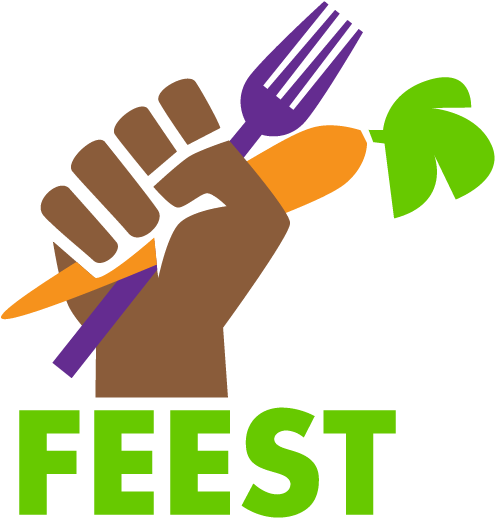What’s good?
Hey y’all its Diana giving a recap on this week’s potluck.

Today we had a visioning process to tackle. The goal: Youth priorities for KCFFI strategies. This tends to be overwhelming for all the youth, including me, but tonight everything ran beyond smoothly. We had multiple youth come through that usually can’t make it. I as well brought two brand new youth who loved it! On top of that its becoming evident to me that FEEST is blowing up! Community centers as well as counselors are offering FEEST information. Giving youth opportunities for service learning hours with us. As a direct result a larger variety of youth came to our table tonight.
The whole group as top prioritizes emphasized: transportation, neighborhood farmer’s markets, education; social justice, nutrition, available neighborhood programs, healthy school lunches, and emergency food resource availability.
Jessie is an amazing cook; we all know this! Tonight though i have to top my hat off to the whole cooking crew. There was more than enough food for everyone, and as usual it was delicious! From Yakisoba, to curry, to a green salade with an avocado and orange dressing, we all indulged.
 FEEST is really on a roll now and the mere thought of “franchising” FEEST has now begun to be a plausible reality. Though my blog writting skills aren’t amazing our progress definitly is!
FEEST is really on a roll now and the mere thought of “franchising” FEEST has now begun to be a plausible reality. Though my blog writting skills aren’t amazing our progress definitly is!
Thank you to the Clean up crew!



Coming June 12-13th to Seattle International Film Festival
WHAT’S ON YOUR PLATE is a witty and provocative documentary produced and directed by award-winning Catherine Gund about kids and food politics.
Filmed over the course of one year, the film follows two eleven-year-old African-American city kids as they explore their place in the food chain. Sadie and Safiyah take a close look at food systems in New York City and its surrounding areas. With the camera as their companion, the girl guides talk to each other, food activists, farmers, new friends, storekeepers, their families, and the viewer, in their quest to understand what’s on all of our plates.
The girls address questions regarding the origin of the food they eat, how it’s cultivated, how many miles it travels from the harvest to their plate, how it’s prepared, who prepares it, and what is done afterwards with the packaging and leftovers. They visit the usual supermarkets, fast food chains, and school lunchrooms. But they also check into innovative sustainable food system practices by going to farms, greenmarkets, and community supported agriculture programs. They discover that these programs both help struggling farmers to survive on the one hand and provide affordable, locally-grown food to communities on the consumer end, especially to lower-income urban families. In WHAT’S ON YOUR PLATE?, the two friends formulate sophisticated and compassionate opinions on the state of their society, and by doing so inspire hope and active engagement in others.